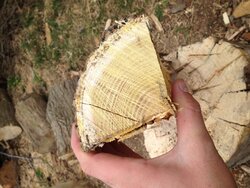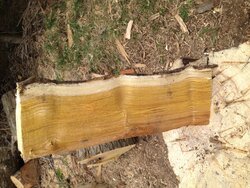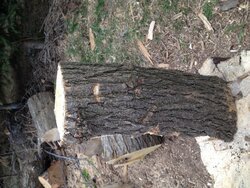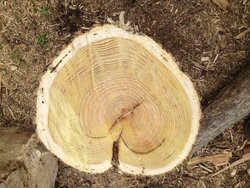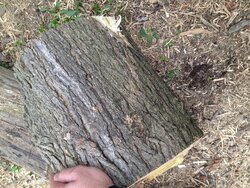Hey all,
Below are some pictures of some wood I cut today. The tree was leaning, had a broken off top, and was still green/alive when I cut it down. I am just curious as to what it actually is as I have no idea. I am somewhat new to actually putting a name to the wood I am cutting, splitting, and stacking (thanks to this forum!).
When cutting, the chips were almost a yellowish green color. The wood splits relatively easily. Any ideas?
Thanks,
Steve
Below are some pictures of some wood I cut today. The tree was leaning, had a broken off top, and was still green/alive when I cut it down. I am just curious as to what it actually is as I have no idea. I am somewhat new to actually putting a name to the wood I am cutting, splitting, and stacking (thanks to this forum!).
When cutting, the chips were almost a yellowish green color. The wood splits relatively easily. Any ideas?
Thanks,
Steve


